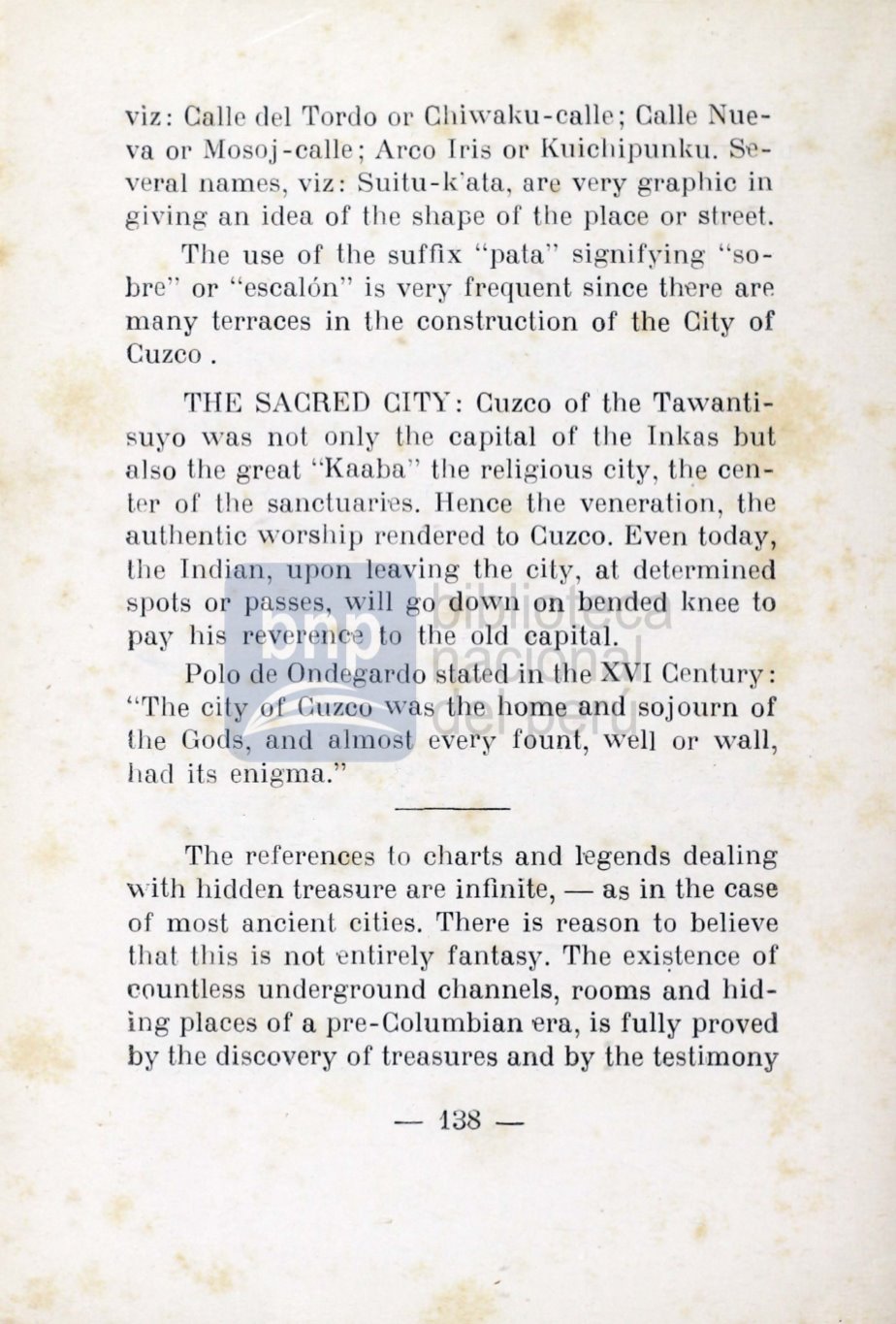

viz: Call l
.1
T r o r Chh. ·aJ·u-calle; Call
ue-
va or
l\tI
oj -call · Are Iri or Kuichipunl u.
v
ral nam viz: Suitu-k·ata ar v ry graphic in
gi' ing an idea of the hape of the plac or str
t.
The use of the suffix ' pata signifying o–
bre or ' escalón ' is very frequent since th re are
many terraces in the construction of the City of
Cuzco.
THE SACRED CITY: Cuzco of the Tawanti-
uyo
V\
as not only the capital of the Inkas but
also the great "Kaaba" the religious city the cen–
ter of the sanctuari s. Hence the veneration, the
authentic
V\
orship r endered to Cuzco. Even today,
the Indian, upon leaving the city, at det rmined
spots o p sses will go down n líe de _ knee to
pay hi r
e·
o the old ca ita .
I Century:
"The ci ty, /'o uzco was he ho e nrl soj ourn of
the God , and ahnost every f unt, ell or wall,
hacl its enigma."
The references to charts and 1'egends dealing
\.vith hidden treasure are infinite, - as in the case
of most ancient cities. There is reason to believe
that. this is not ·entirely fantasy. The
exi~tence
of
countless underground channels, rooms and hid–
ing places of a pre-Columbian era, is fully proved
by the discovery of treasures and by the testi,mony
- 138 -
















